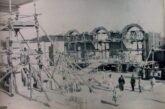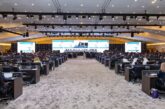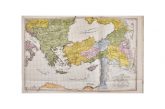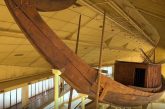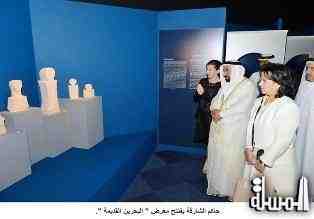
Ruler of Sharjah opens Bahrain Ancient exhibition
Almasalla, ATP News- Sharjah- HH Sheikh Dr. Sultan bin Mohamed Al Qasimi, Member of the Supreme Council and Ruler of Sharjah, inaugurated this morning an exhibition entitled "Ancient Bahrain: The Power of Trade"2nd Millennium BC -3rd Century AD), at the provisional exhibition hall at Sharjah Archaeology Museum.
HH toured the exhibition, listening to a detailed overview of the valuable exhibits, and what they represent in terms of cultural richness and historical importance.
HH was accompanied by Sheikha Mai bint Mohammed Al Khalifa, Bahrain’s Minister of Culture; Sheikh Salem bin Abdulrahman AL Qasimi, Director of HH’s Office, Mohammed bin Hamad Al Mo’awda, Ambassador of the Kingdom of Bahrain to the UAE; Abdullah Bin Mohamed Al Owais, Head of Sharjah Department of Culture and Information, Dr. Nadine Boksmati, Advisor at the Ministry of Culture, Bahrain; Manal Ataya, Director General of Sharjah Museums Department; Dr. Pierre Lombard, Archeology Advisor at the Ministry of Culture, Bahrain; and Rashad Faraj, Acting Director of Bahrain National Museum.
The exhibition, which will run until March 29, 2015, is the result of the groundbreaking collaboration between Sharjah Archaeology Museum and Bahrain National Museum, and supports initiatives between Bahrain Ministry of Culture and Sharjah Museums Department (SMD) to enhance partnership and collaboration on various cultural ventures. It also coincides with Sharjah’s celebrations as 2014 Capital of Islamic Culture and Capital of Arabic Tourism 2015, as well as Manama’s status as a Capital of Asian Tourism 2014.
The exhibition offers a fascinating insight into ancient trade links around the Arabian Gulf, and features artifacts from Bahrain National Museum’s permanent collection, focusing on the Dilmun civilization.

Commenting on this event, Sheikha Mai bint Mohammed Al Khalifa, Bahrain Minister of Culture, said: "Our present is merely the continuation of a long history that our nations share. Our ancestors turned this coast into a harbor for civilization and this exhibition sheds new light on the historical significance of Bahrain’s contribution to humanity, and the Bahraini heritage as a part of the wider Gulf region. We are very happy to hold this exhibition in Sharjah, as a fitting tribute to Sharjah’s position as 2014 Capital of Islamic Culture."
Manal Ataya, Director General, SMD, said: "This exhibition is not only a rich and fascinating celebration of a formative era in our region’s past, it also represents an important partnership between Sharjah Museums Department and the Bahrain Ministry of Culture; one we are proud to be part of. Forging links in this way, and co-operating to share artifacts and research between our two nations’ museums, creates an invaluable path to greater cultural awareness and understanding – across the entire Gulf region and beyond."
Exhibits are categorized in four main groups. These are: ‘Dilmun and Tylos, Centuries of Commerce and Prosperity’; ‘Dilmun: The Storage of the Gulf in the Bronze and Iron Ages (2000-500 B.C.)’; ‘Tylos, the Trade Routes Cross-Road (300-200 B.C.)’; and ‘Beyond Trade Influence: A Rich Local Culture’. The exhibition is a successful illustration of Dilmun and Tylos as prosperous markets on important marine trade routes.
The exhibition will display about 130 selected artifacts from the Bahrain National Museum’s permanent collection, including stone stamps, pottery, glassware, ivory, and alabaster kitchen pieces, in addition to golden pieces and stone exhibits that testify to the richness of the region’s trade activity during that era.
The exhibition represents an important opportunity for visitors to explore the social and cultural domains of old Bahrain, which were created by the large volume of trade activities, and the exceptional location of the island in the heart of the old world, making it a melting pot for old markets and cultures.
Despite some evidence of local culture being influenced by this situation, archaeological evidence also shows that local communities still preserved their indignenous culture at the same time, which indicates its strengths and resilience. This idea forms an important part of the message the exhibition is trying to deliver.
Source: WAM



